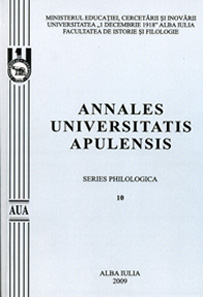DU CORPS VÊTU AU CORPS DÉVÊTU,
OU LE CORPS MIROIR DE L’ÂME DANS LA MINIATURE
ORIENTALE
FROM THE CLOTHED TO THE UNCLOTHED BODY, OR THE BODY AS A MIRROR OF THE SOUL IN ORIENTAL MINIATURE
Author(s): Anna CaiozzoSubject(s): Cultural history
Published by: Universitatea »1 Decembrie 1918« Alba Iulia
Keywords: punishment; body; Eden; innocence; islam; nudity; purity; taboo; clothe
Summary/Abstract: In the medieval Islamic world, clothing is the mark of social status and ethnicity. It is ruled by A religious law which regulates the components in various circumstances. Yet if nudity and half nudity are considered as taboos or bad social behaviour, miniaturist painters used to represent them frequently. The half-nudity is significant, for instance, of the condition of Men before and after the original sin. It does represent purity and fall. That is why the indigenous people of the islands located at the extremity of the world are depicted naked, as the testimony of an imaginary Edenic condition. But living nude is also a kind of way of life chosen by some mystical as hermits, monks, Sufis and of course Brahmans. It is also the main characteristic of lower and labour classes in an aristocratic society where costumes, quality of textiles and patterns are real marks of a high condition. In the oriental miniature, especially in the corpus of the Shâh Name’s manuscripts, the half naked body sometimes reflects the punishment of political criminals especially tyrants and transgressors of the divine law. And in the eschatological illustrated literature, we can also observe that the people damned in hell are also nude or half-nude. So nudity and half nudity are badly considered in the Oriental world because the human corps created by God has to be respected and honoured by the clothes as it is celebrated in one of the most ancient festival of the Near-East, i.e. the Zoroastrian feast of Nawrûz.
Journal: Annales Universitatis Apulensis. Series Philologica
- Issue Year: 11/2010
- Issue No: 3
- Page Range: 158-171
- Page Count: 14
- Language: French

